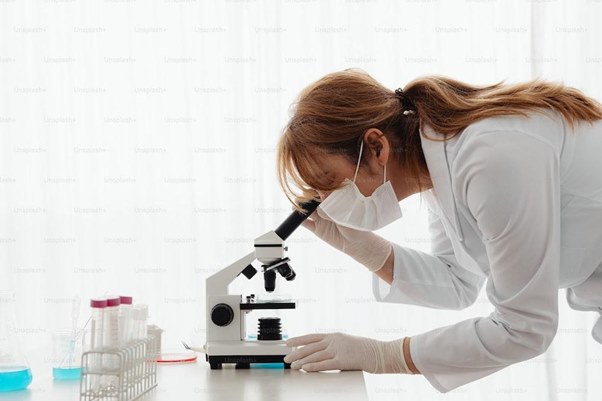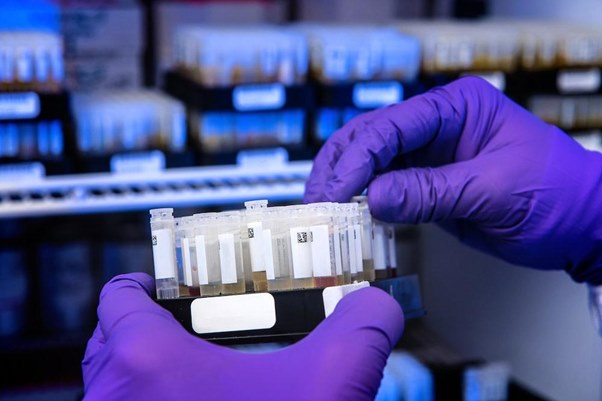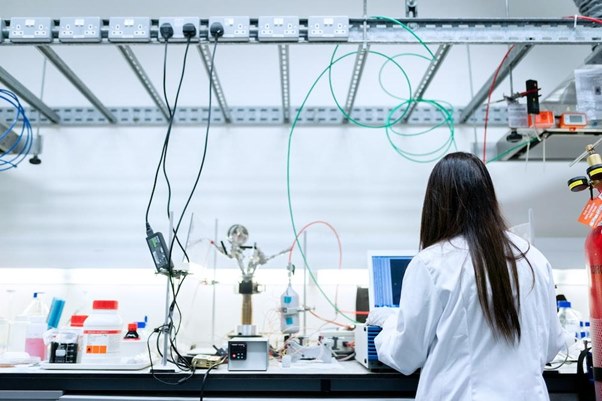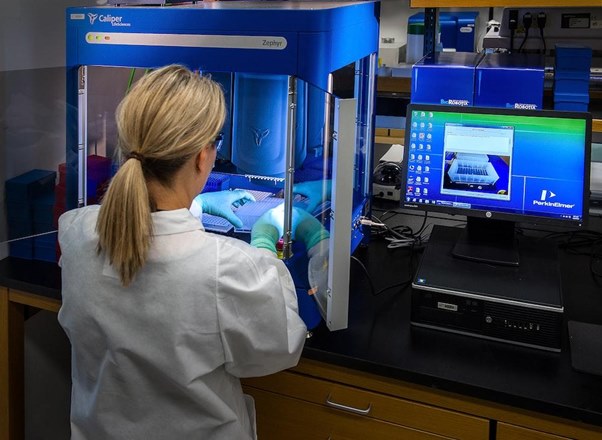Things You Must Know About Custom Gene Synthesis
May 15th 2023
Recombinant proteins are in high demand in biometrics and other industries. While producing high-quality proteins might be difficult, commercializing protein expression services has made the process more accessible.
Cloning protein-coding sequences into a suitable expression vector and then transforming them into host cells is the first step in creating recombinant proteins. Notably, custom protein expression is a critical component of recombinant protein synthesis.
This essay will cover all you need to know about bespoke protein manufacturing. We will also review the parameters influencing soluble protein expression and how you may change them.
What is Custom Protein Synthesis?

Custom proteins are recombinant proteins produced by custom manufacturers rather than commercial production. But what exactly are recombinant proteins? Cloning recombinant DNA into an expressional vector, which expresses the gene and translates the messenger RNA, produces recombinant proteins.
Generally, the recombinant protein is a modified form of natural protein manufactured in various methods to boost protein output, change gene sequences, and develop economically viable goods.
Essential Things to Know About Custom Gene Synthesis

Custom gene synthesis technology is chemically constructing a strand of DNA base by base. Unlike DNA replication in cells or via Polymerase Chain Reaction, gene synthesis does not require a template strand.
Gene synthesis overview, however, requires sequentially adding nucleotides to a single-stranded molecule that serves as a template for other molecules, a pattern for creating a complementary strand. The most fundamental phase in the process is gene synthesis.
This technology underpins the field of synthetic biology. Custom gene synthesis and cloning services plasmid vector technology has revolutionized biology research. Scientists are no longer limited to changing a single gene at a time; instead, they may now construct or reprogram entire genomes and cells.
To accelerate vaccine research, freshly discovered viral genomes can be rapidly manufactured. Furthermore, you can develop novel enzymes to treat cancer and produce long-lasting biofuels. The following paper will hone in on six essential aspects of bespoke gene synthesis.
1. Sequence Optimization
It will assist you in designing the sequence you want to create during artificial gene synthesis. Your choice, however, should be guided by your ultimate purpose in gene synthesis.
Codon optimization, for example, is appropriate when attempting to boost heterologous protein expression levels; however, it may not be appropriate for examining endogenous gene expression regulation. Ensure your intended reading frame is maintained across the coding region for structures with many segments.
Short flanking sequences are usually included to aid later excision or recombination using restriction enzymes or similar procedures. Check that your sequence contains no restriction enzyme recognition sites or other sequences that could interfere with your operation.
2. Oligo Design
After selecting the proper sequence optimization, you must comprehend and select the oligo design that will aid in determining the best approach for partitioning the complete gene into produced and assembled segments.
For many synthetic genes, you should break the sequence into smaller pieces that can be synthesized separately and concatenated afterward. Oligo design software programs are available to assist in oligo design.
The oligo length varies and is influenced by various factors, including individual preference, sequence complexity, and the assembly method used. Longer oligo overlaps minimize the rate of nonspecific annealing, improving the likelihood of successful assembly.
Shorter oligos have a lower mistake rate but require more overlaps, making them very expensive. The oligos can readily obtain uniform lengths and melting temperatures.
3. Oligo Synthesis
Oligo synthesis is an important step in custom gene synthesis. Oligo synthesis is typically accomplished by the use of phosphoramidites, which are chemically modified nucleotides. These nucleotides ensure that all genes are correctly integrated and prevent the developing strands from engaging in unwanted reactions during synthesis.
The phosphoramidite group is connected to the 3' O and contains a methylation phosphite and a protective di-isopropylamine to avoid unwanted branching. Phosphate is used because it responds faster than phosphate.
To prevent unwanted reactions until the oligonucleotide synthesis is completed, methyl groups are linked to the phosphite, and amino-protecting groups are added to the bases.
4. Gene Assembly
Gene assembly is important to comprehend during the custom gene production process. There are various approaches to assembling oligos into full genes. The length of the sequence you utilize will affect the approach to take. For shorter sequences, the polymerase-based technique can be used to generate oligos.
A more extended sequence Vivo-recombination-based technique, on the other hand, is advocated. To achieve high-quality IDT gene synthesis, use the proper gene assembly approach with a high-fidelity enzyme.
5. Sequence Verification and Error Correction
There are likely errors in each step of the artificial gene synthesis process. As a result, all synthetic sequences must be validated before being used. You must discover the various harboring mutations and efficiently eliminate or correct them from the pool. Internal insertions, deletions, and premature termination are common in synthetic DNA sequences.
Due to the accumulation of errors from phosphoramidite chemical synthesis alone, only about 30% of any generated 100-mer is the needed sequence. Incorrect annealing during oligo synthesis can generate heterogeneity in the final pool of synthetic gene products.
6. Cloning
Genes that have been synthesized must be cloned into vectors. Plasmids for transfection or electroporation into cells are examples of vectors. To facilitate cloning, synthetic genes can be designed with restriction enzyme sites, recombination arms, or other flanking regions.
Recombination-based approaches start with PCR extension of the gene insert to introduce 15 bases of sequence similarity to the linearized vector, increasing homologous recombination without adding undesirable grounds. This is an option for inserting unique flanking sequences.
Facts to Know About Custom Protein Production
1. Amplification of Genes
Gene amplification refers to the unequal growth of a segment of an individual genome relative to the remaining portion. This is a typical mechanism in most species and has been observed in somatic and germline cells.
Gene amplification is most associated with normal developmental processes. They can also occur as isolated genetic events that have either harmful or beneficial impacts on the organism.
2. The Right Expression Vector Can Impact Protein Solubility
A gene expression vector inserts a specific gene into a target cell. The host cell's DNA molecule carries a specific gene and generates the protein using the cell's protein synthesis machinery. Because expression vectors are very important in producing recombinant proteins, the expression system-optimal expression vector must be employed. The vector must be unique to the system.
When choosing an expression vector for customized protein synthesis, several factors must be considered. First, check that the vector contains all the necessary components for gene expression.
It should also contain a purification tag throughout the entire purification phase. It is frequently necessary to understand how to test ELISA kits to determine which method produces the maximum yield of soluble proteins.
In most cases, the expression vector for protein synthesis includes a purification tag, which aids in protein purification after the expression process is complete. They may include other tags and fusion proteins in addition to the purification tag to aid in studying the function and interactions of the target protein.
When choosing an expression vector, consider the promoter strength. The appropriate promoter should be strong enough to allow for significant product accumulation in host cells while reducing negative effects on cell development, such as toxicity.
A strong promoter is necessary for optimal protein output, whereas a cold-shock promoter is excellent for aggregation-prone proteins expressed at low temperatures.
3. Modify Expression Conditions to Improve Protein Solubility

The expression conditions during custom protein expression service may impact the protein production sequence. High expression temperatures, for example, affect replication and transcription rates.
To start protein aggregation before folding, use powerful expression promoters. To facilitate folding, translation and transcription rates may need to be limited. Protein synthesis may be completed before aggregation formation by slowing these rates.
To enhance the solubility of the recombinant protein, use low expression temperatures. Low temperatures help to slow down cellular activity, slowing translation, transcription, and protein aggregation. Furthermore, lowering the temperature reduces the loss of custom antibody sensitivity. Elevated temperatures, on the other hand, may affect the rates of protein translation, replication, and transcription.
4. Adding a Stability Sequence can Enhance Production
By providing a buffer solution, a stability sequence optimizes the manufacturing process. It may also improve amino acid solubility and protein polymerization. Including a stability sequence in the bespoke protein synthesis process aids in the stabilization of unstable proteins and improves their purification.
Use several tags to improve protein solubility and purification efficiency. Using fusion tags during protein production increases solubility without affecting folding. Fusion tags, for example, can be inserted into the C- and N-terminal regions of proteins.
You can alternatively use peptides containing amino acids to overcome protein solubility issues. Antibody sequencing services help to solve stability problems by improving amino acid aggregation, solubility, and polymerization.
The target domain's beginning and ending residues can affect protein solubility and expression yields. Using functional and structural information to choose the optimum domain construct borders during protein expression. If the domain structure of a protein is unknown, attach the protein sequence to a homologous protein structure to discover the optimum domain borders.
5. Use Codon Optimization to Deal with Rare Codons
This is the most common and fundamental reason heterologous proteins cannot express unusual codons in the target mRNA. When the target gene's codon frequency differs from that of the expressing host, translation may stall or be terminated early.
Codon optimization gene synthesis services can help firms decrease codon bias. The technique is to increase protein solubility by using a synonymous codon change. It offers advantages such as the ability to change the codon bias of a gene to make it compatible with the recombinant host.
Codon optimization replaces uncommon codons with common codons while maintaining the amino acid sequence. Optimizing a gene of interest in a specific heterogeneous expression system can boost its translation rate and overcome restrictions caused by codon use differences.
Custom DNA synthesis is a codon optimization technique that aids in the avoidance of codon bias issues during heterologous protein creation.
There are E. coli expression strains with unique tRNAs that help overcome recombinant gene codon bias. This happens when the natural resource president is used in tRNAs, which boosts protein abundance. A vector design optimized for antigen synthesis ensures monoclonal antibody production.
Increasing molecular weight may also affect protein solubility during recombinant protein production. Because E. Coli is an expression host, specific protein domains rather than complete proteins must be designed. Consider utilizing solubility-boosting fusion tags, which aid in protein purification without interfering with their biological or biochemical capabilities.
Since fusion tags occasionally interfere with a generated protein's biological function, removing the tag enzymatically is prudent after purifying the official portal.
Benefits of Custom Protein Production

1. Reproducible biological operation
Years of production expertise with a specific source reduces batch-to-batch volatility. There is no chance of changing suppliers, which is a problem with OEM equipment. Avoiding lengthy batch validations saves time, money, and effort, but problems get worse when the batch doesn't fit, and you must identify and revalidate new suppliers.
However, it is vital to emphasize that no biological testing on proteins has been conducted. As a result, if you do not conduct research, you risk wasting time and money on custom antibody services that will not match your needs.
2. It makes your project more flexible
How many promising projects have been put on hold because the reagents were too expensive? This issue usually arises in conventional recombinant manufacturing; however, it does not conflict with bespoke production and solid-phase custom peptide synthesis services. As your research progresses, you may wish to create alterations to a wild-type protein.
3. It reduces costs
Custom protein manufacturers provide substantial budget savings. If your activity requires large quantities of proteins, a custom batch is less expensive after the initial manufacturing. The production also offers volume flexibility to reduce costs while meeting rising demand.
If you routinely purchase recombinant proteins, comparing your custom gene synthesis price to those of a custom manufacturer may be beneficial.
4. It is a biotherapeutic
Abnormalities with proteins in the body cause most diseases as a whole or in big portions of the body. Diabetes, cancer, viral illnesses, hemophilia, and anemia require therapeutic proteins.
Antibodies, Fc fusion proteins, hormones, interleukins, enzymes, and substances that prevent blood clotting are all examples of therapeutic proteins. Human proteins created by genetic engineering are critical to the pharmaceutical industry.
Bottomline
A protein expression system is used to create high-quality recombinant proteins. Due to a rise in service providers and developments in synthetic biology, customized protein expression is now more inexpensive. The cutting-edge protein expression optimization approach has benefited protein synthesis and purity optimization.
This article has discussed custom protein expression. When selecting an expression system, several factors must be considered. Select the proper expression host and expression vector for recombinant protein synthesis services. Commercial peptide synthesis companies can assist with bespoke protein expression. These companies specialize in recombinant expression and bespoke antibody manufacturing.

